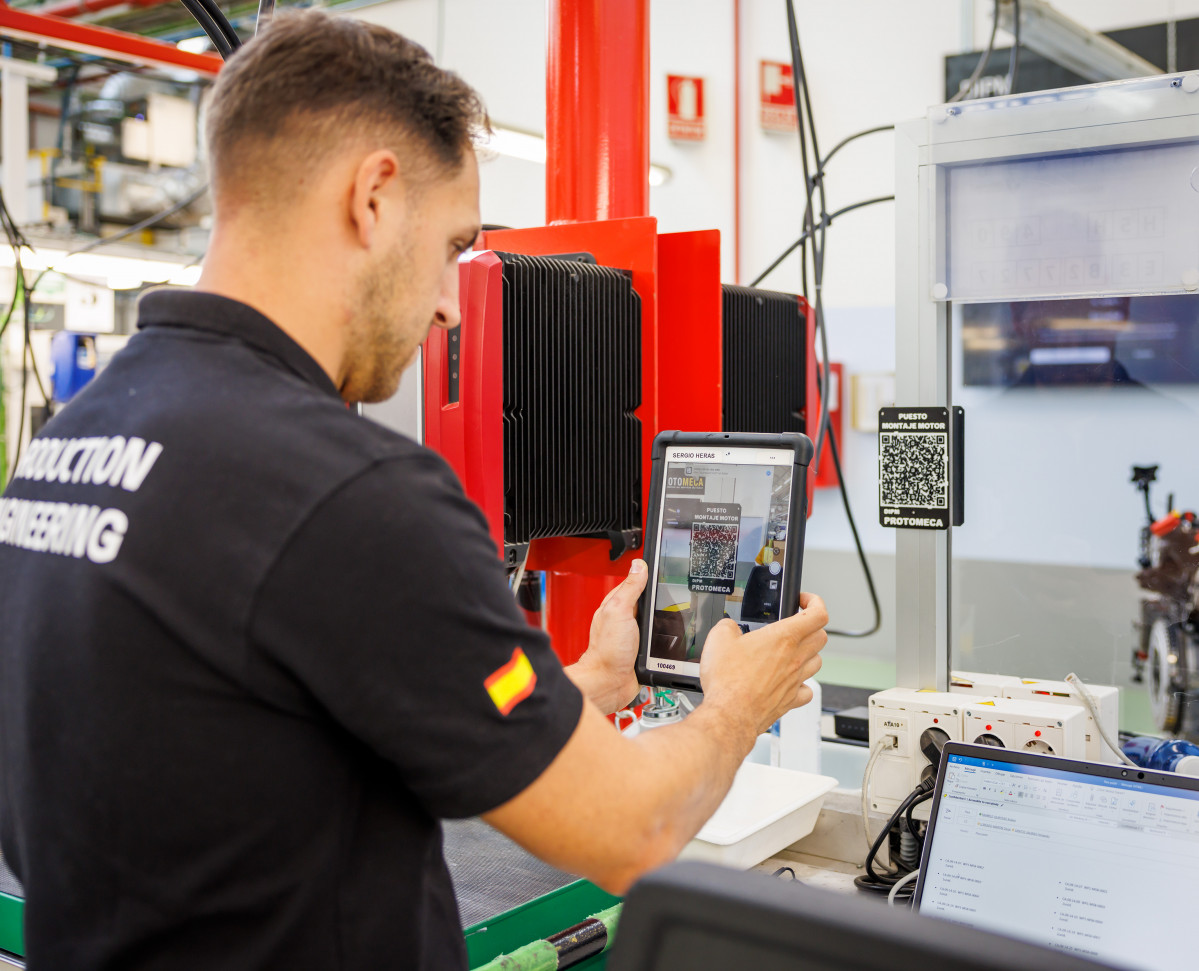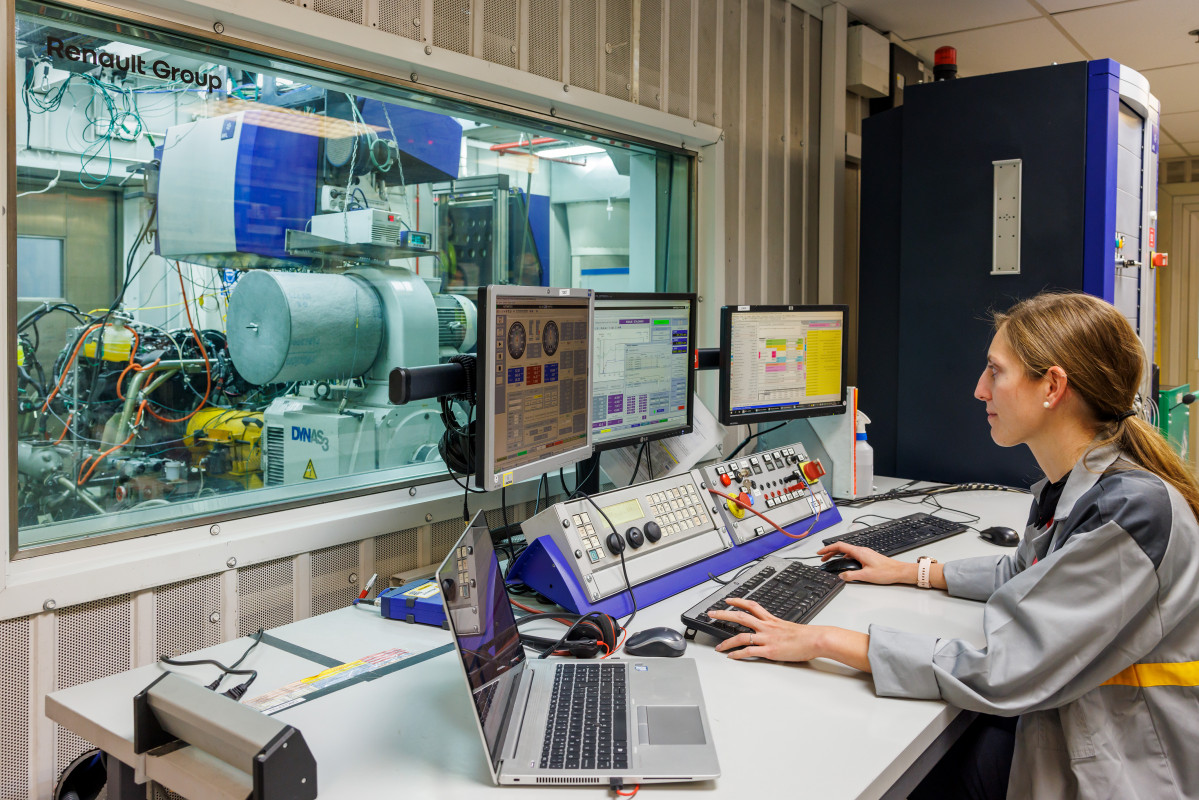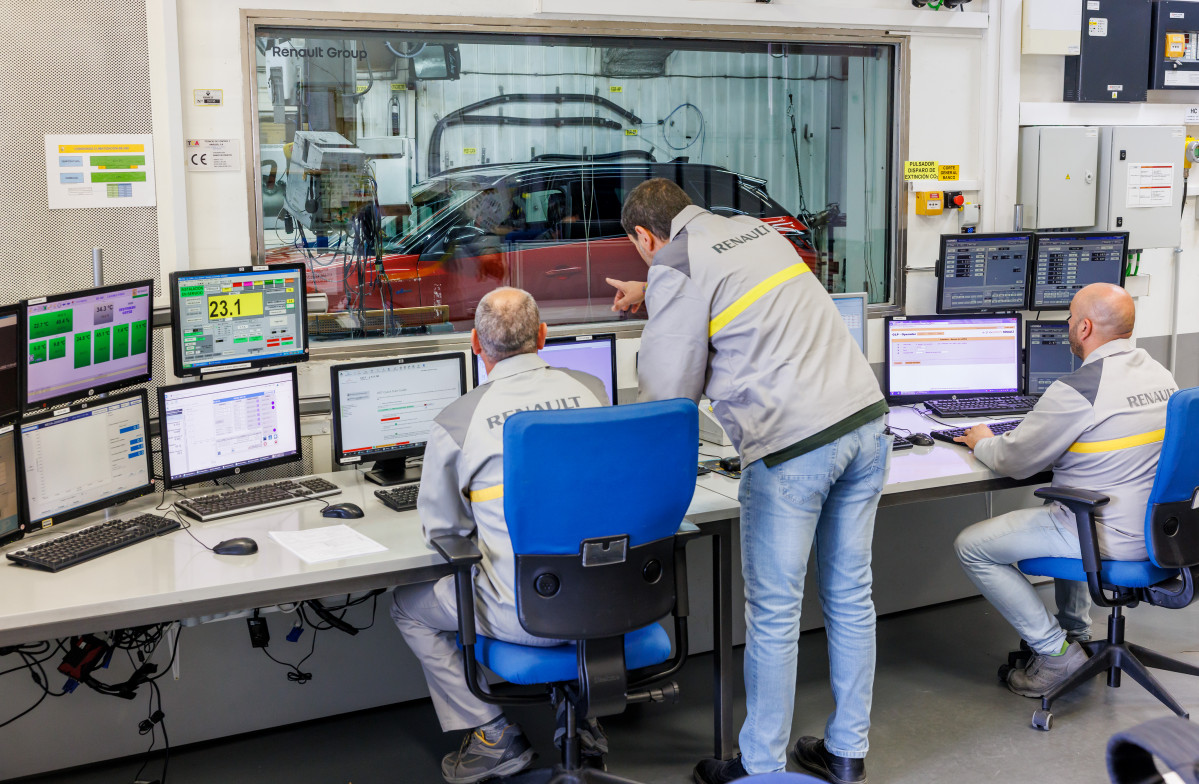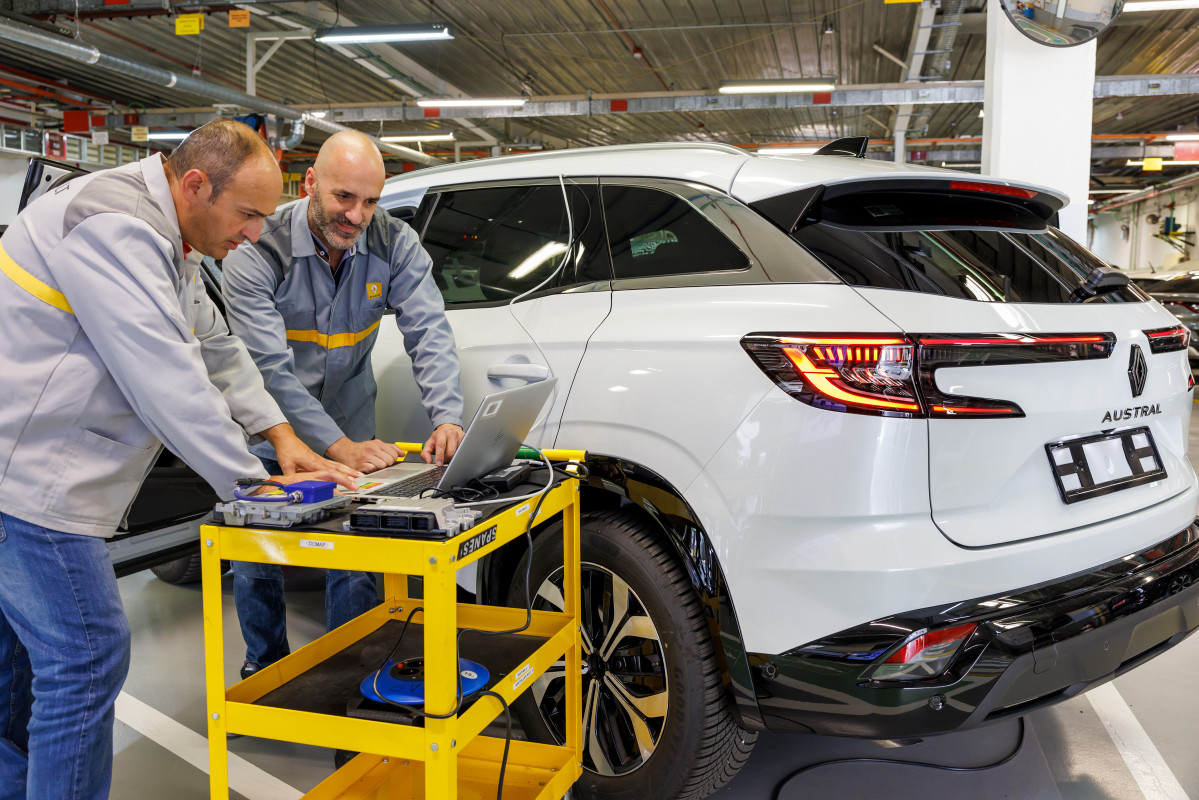"The Centre in Valladolid a benchmark in E-Tech hybrid technologies"
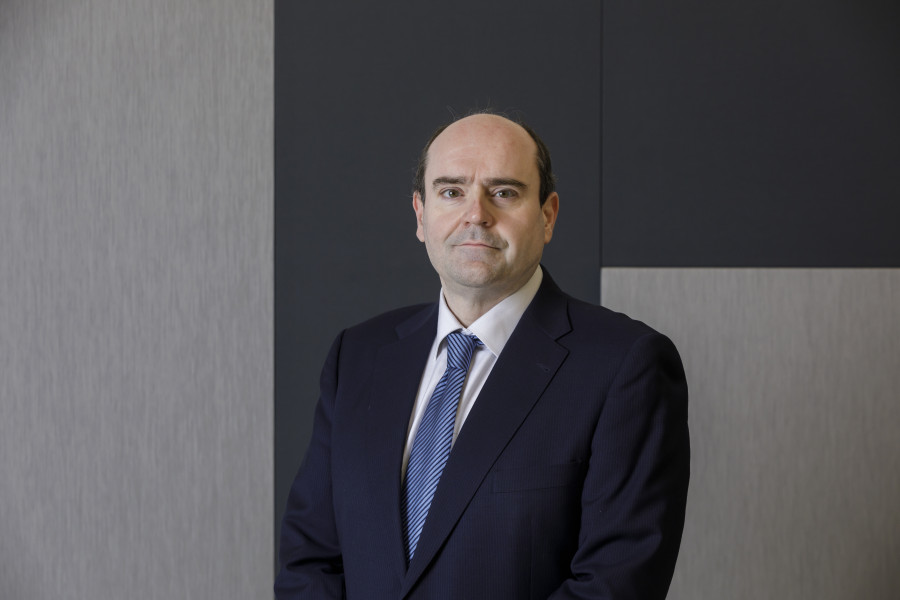
AutoRevista.- The Valladolid R&D&I Centre plays a fundamental role in any model produced by Renault in Spain. What are the activities prior to the industrialisation of a vehicle?
José González Para.- The Renault Group R&D&I centre in Valladolid is responsible for all the phases of a project, from conception to optimisation of the product in mass production, through to the industrialisation stage.
The conception team works on the design of both vehicle parts and the powertrain (engine, gearbox, batteries and hybridisation system, both in the Hardware and Software parts). Its mission is to obtain a product that complies with the load book, and for this purpose these teams work with numerical simulation programs. For example, this team was responsible for the complete conception of the MildHybrid 140 CV and 160 CV engine.
Once the conception phase is finished, the R&D&I Centre has infrastructures to continue in the validation and fine-tuning process.
The prototype workshop is the engineering factory, where the designs that until now were part of a simulation program are built and come to life. In this department, as part of the digitisation process and in line with the zero papers project, using a tablet, a QR code is scanned to access the technical recommendations, safety standards and all the documentation necessary to carry out its mission and ensure the traceability of the entire manufactured prototype.
Once the simulation is finished and the prototype built, it is time to validate it. For this, the R&D&I Centre has 32 large test facilities and a test track that have 3.5 million kilometres of testing behind them.
AR.- Once the design stage is finished, what type of validations are necessary?
J.G.P.- Of course, we track the product from conception to serial life. The centre has 24 engine test benches, five gearbox test benches and a battery test bench for E-Tech vehicles, used for example for Austral validations. These facilities are capable of simulating the operation of the engine-propeller in different driving conditions on the highway, highway or city, under normal conditions or extreme operating conditions to guarantee the reliability of the engine at 300,000 km.
These benches carry out the conformity tests (torque and power) of the production of the engines of the Motores de Valladolid factory and are necessary for the definition of the engine operating conditions for the reduction of gas emissions in order to guarantee the European Euro6 emission standard, simulating all types of driving and atmospheric conditions.
The engine test benches at the Valladolid R&D&I Centre carry out 25,000 hours of reliability tests per year and 11,000 hours of fine-tuning tests, with a cumulative 11,000 hours tested on New Renault Austral.
After the motor rehearsal we reached the vehicle phase. Following the protocol, in the case of Austral, for example, we have carried out the validation with each of the engines that will make up its range.
For vehicle validation, the Renault R&D&I Centre in Valladolid has 4 roller benches, one of which is aeroclimatic. In these facilities we can carry out the simulation of all types of driving and extended climatic conditions, with the aim of responding to European emissions regulations. We understand by extended weather conditions: from -30 to 45 degrees; from 0 to 4,000 m altitude, up to 95% humidity, etc...
These facilities are capable of simulating climatic effects on vehicle parts, the effect of temperature and humidity on plastic parts, vision cameras, door panels... as well as extreme cold to validate engine intake parts.
These benches carry out 10,000 hours of testing per year on the roller benches, 4,000 hours on the aeroclimatic bench with a cumulative of 1,200 hours tested on Nuevo Renault Austral.
Finally, missions in extreme conditions are part of the tuning work, together with computer simulations, work on test equipment or tests in real driving conditions on the open road. The usual missions are either in Granada to carry out tests at altitudes up to 2,500m (the highest road in Europe is there), or in Kiruna (Sweden) where cold tests are carried out, sometimes reaching -30/- 35ºC.
AR.- What is the role of the R&D&I Centre in the development, validation and fine-tuning of software and technology linked to connectivity?
J.G.P.- The unstoppable increase in embedded technology makes it essential to develop and validate software and technology linked to connectivity, for which this centre is also responsible.
We are facing a global change in the automotive industry. This change is well reflected in the vehicle's connectivity and multimedia as it becomes increasingly important. We have seen it with Austral, which is the union between the know-how of Renault and the operating systems of Google. The integration of Android allows us to have all the advantages offered by this technological giant, while improving the user experience with the connected services offered by the diamond brand.
If we talk about connectivity and multimedia, we have to talk about remote updates. Renault is capable of remotely updating the vehicle's embedded computers, ensuring that the user has the latest developments developed throughout the life of the vehicle.
AR.- How does the centre coordinate with other actors on a global scale in different projects?
J.G.P.- Right now we are more specialised in E-Tech developments and validations, as the Engineering Centre of the Renault Group Hybridisation Hub in the world, but of course the R&D&I Centre team works closely with our counterparts from engineering both in Paris and in other engineering centres of the company. We share our ideas and we are also participants in those that are carried out there.
In addition, we have the Innovation Antenna in Spain. This antenna aims to develop the Spanish ecosystem around the new automotive challenges in the medium and long term; establishing strategic collaborations with corporations, small and medium-sized companies and Spanish universities.
These innovation activities that we are leading from the R&D&I centre are solutions with high added value that are articulated in three key verticals: electrification, connectivity and development of a collaborative ecosystem.
AR.- In which disciplines and technologies does the centre mainly focus its activity?
J.G.P.- Among the new missions assigned to the Valladolid centre in the Renaulution Plan, the adaptations to EU06 and EU07 standards for Renault vehicles manufactured in Spain such as Captur and Austral, as well as for Dacia models such as Duster and Jogger and mass production management stand out from all the vehicles and mechanical components of the Spanish factories.
Likewise, the arrival of the Hybridisation Hub has made the Renault Group R&D&I Centre in Valladolid a benchmark in E-Tech hybrid technologies, power electronics, batteries for hybrids, Electricity/Electronics (PIE) platform, development and validation of software and technology linked to connectivity, driving assistance aids (ADAS), hydrogen, e-Fuel and mobility services, among others.
AR.- What technical qualifications do the rest of the workers have?
J.G.P.- This consolidation of the Valladolid R&D&I Centre, which has more than 50 years of history, has also led to a very significant increase in staff, which will mean a 50% increase in staff compared to the they had before the arrival of the industrial plan. Specifically, it will go from 1,000 engineers to 1,500; all of them highly qualified and knowledgeable both in conventional validation means and in the new validation means adapted to new technologies. The training of this group is constant, and they have experience in matters such as electronics, software, electrification and batteries, among other things.
AR.- What role does the Valladolid R&D&I Centre play in the Renaulution strategy?
J.G.P.- The 4th Industrial Plan 2021-2024, called Renaulution Spain, turned our country into the Renault Group Hybridisation Hub with the award of 5 new vehicles, a new family of engines, two gearboxes and a Circular Economy project. All these organs are hybrids, which is why Spain became the Renault Group Hybridisation Centre worldwide. This means that the company has the entire hybridisation value chain in Spain; engine and gearbox factory and R&D&I Centre.
In addition, the 4th Industrial Plan 2021-2024 also announced that all these awards would serve to consolidate the R&D&I Centre that the Renault Group has in Spain and this is what has happened, since new and important competencies have been assigned, we will grow to 1,500 engineers and we have also fully modernized its facilities, recently inaugurated by the President of the Government.
The consolidation of the centre has also meant a remodelling of the entire building, which has meant a comprehensive modernisation of the facilities, in accordance with the decarbonisation objectives of the Renault Group, as shown by the double "brise-soleil" façade, designed so that in winter let the sun in when it is lower to take advantage of the heat, and in the summer provide shade.
Entrevista publicada en el número 2.375 de AutoRevista

AutoRevista analiza el informe ‘Movilidad Eléctrica en España. Situación actual, objetivos y retos a abordar’ de May López, profesora de OBS Business School, que concluye que la movilidad eléctrica se posiciona como pieza fundamental en las estrategias de sostenibilidad.
Una información de Irene Díaz.

La infraestructura de recarga de acceso público en España sigue desarrollándose a buen ritmo. Según el Barómetro de Electromovilidad de ANFAC, durante el segundo trimestre de 2025, la red de recarga ha aumentado un 3%, con 1.534 nuevos puntos instalados.

ACICAE-Cluster de Automoción del País Vasco ha entregado los XIX Premios Automoción-ACICAE 2024 a personas organizaciones y proyectos que han destacado por su labor en favor de la competitividad del sector de automoción.

Toyota España ha vuelto a destacar su apuesta por el hidrógeno como energía sostenible, limpia y respetuosa con el medio ambiente participando en la duodécima edición del Green Gas Mobility Summit, celebrada los días 25 y 26 de junio en La Nave (Madrid).

Para celebrar su 70 aniversario, Alpine ha creado una película de tres minutos que repasa los momentos más destacados de su historia y los que están por venir. El vídeo pone música a la visión del fundador de Alpine, Jean Rédélé, y al lema de la marca: ‘Convertir la ligereza en una fortaleza’.

